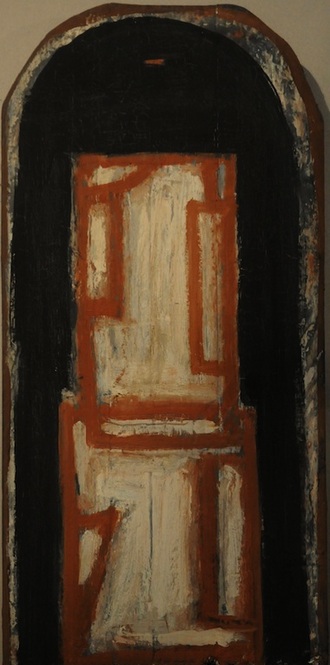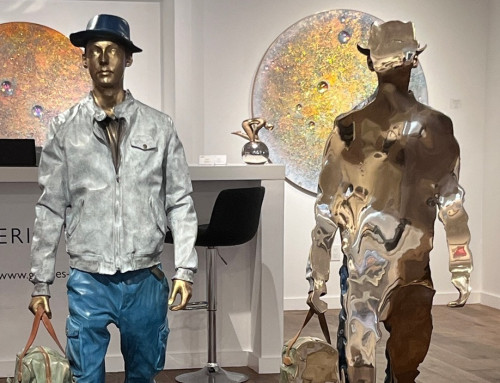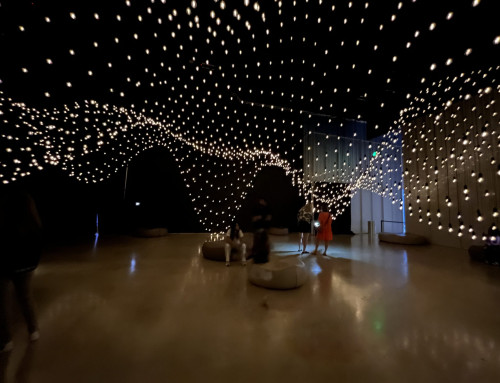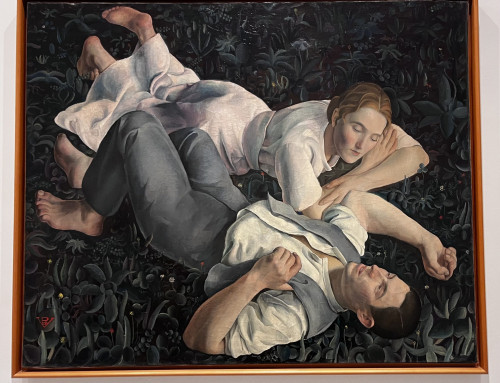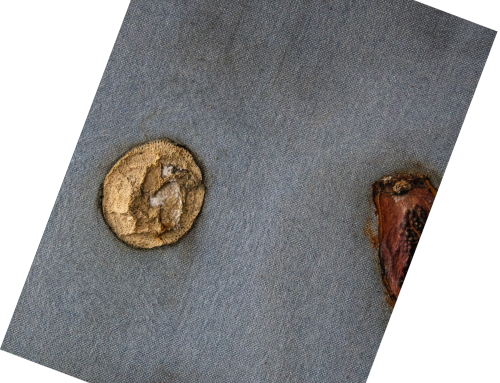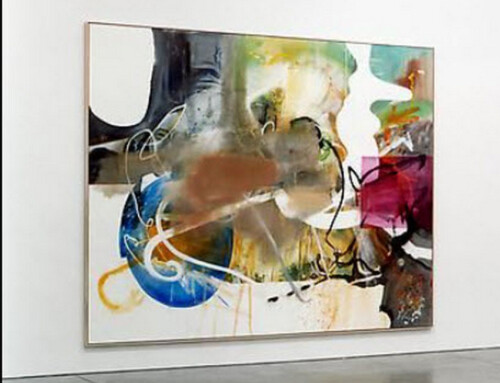by Light-man
The issue of time in art is not new. Contemporary artists tend to be ahead of time. They delve into concepts that have not been dealt with. They want us to see things that we have not seen before.
But the contemporary artist from Uruguay, Marcelo Larrosa-Martinatto thinks that art needs time, and he goes even further.
We need time to create art and we need time to see art.
This sounds contradictory, as it comes from an artist who has an unusual speed to create.
Marcelo can create several paintings in one day, one after the other, one on top of the other; he can paint on any surface that he finds and at any time; he prepares his own canvas, and constructs what he calls “structures”, and when the urge comes, he paints everywhere, sometimes even on the table, a chair, the floor, the window, and if he does not find a surface, he builds one with anything at hand… He does not seem to waste time.
The world is too preoccupied with novelty; the news of yesterday no longer means anything today…
Art, especially the traditional formal language of art, appears to be caught in time, but the contrary is true. Once the shock of the new is over, what is left is the work done with tenacity and time, something all too familiar to all old masters.
As he turns to 42 years old this month, he has a solo exhibition currently on view at the Museum of Contemporary Art El Pais, in Montevideo, Uruguay. Under the name of Structures, he is showing 33 art pieces selected from 98 pieces that he created in the past 3 years. Some are wooden altarpieces, installations of structures, sculpture, paintings or “a kind of marine geometry based on the cargo ships that I saw passing by, through the window of my studio”.
The culture of sports related to the physical and exterior, strong colors of attires used to attract, big contracts…all this is good, but this way of thinking has filtrated in places where having a new TV with a plasma screen becomes more important than awareness, and the time that we spend to make things…what matters is what comes after we have shaken off the dust of reality from the bottle, thus erasing its reality, and the sun shines again through the transparency of this bottle…
He goes on: I am making my own colors, my own canvas, I am using traditional methods, sometimes using very humble materials, so that I could give it life and learn through the material its truth, watching closely how things unfold, savoring the mystery of life, and be amazed of everything just like kids.
The contemplative nature of Marcelo’s work seems to bring him out of the context of time. Time is inherent in the history of art, but in this case, time takes place in the moment of now, and therefore transcending the essential reality of time- a time in which no matter how slow or fast his actions or ideas are manifest, it is simply irrelevant to a collective consensual perception of what time should be.
As his work stems from tradition and traverses the intricate dimensions and depths of tradition, it has simply surpassed any viable interpretation of its nature. By doing so, he has chosen tradition to trigger out the timeless component of the meaning of contemporary art.
“Art is infinite”, he insists. “Art is not what we see on the canvas when we are distracted. Today art has often become functional, adequate, intellectual…but we know that art is not necessarily beautiful or comfortable”
When I paint I am really giving something that transcends itself and this is a positive way of being. Painting is a visual phenomenon and everything we say about painting is not painting. Painting is not exhausted; it is the painter who is.
His background includes scholarship in Florence and the School of the South, founded by Uruguay’s Universal Constructivist Joaquin Torres-Garcia, and worked closely with Torres-Garcia’s direct disciples Julio Alpuy and Anhelo Hernandez.
Marcelo has shown extensively in various galleries and museums in the United States, Uruguay, Colombia, France, Chile, Bolivia and Peru. He lives and works in Montevideo, Uruguay.




